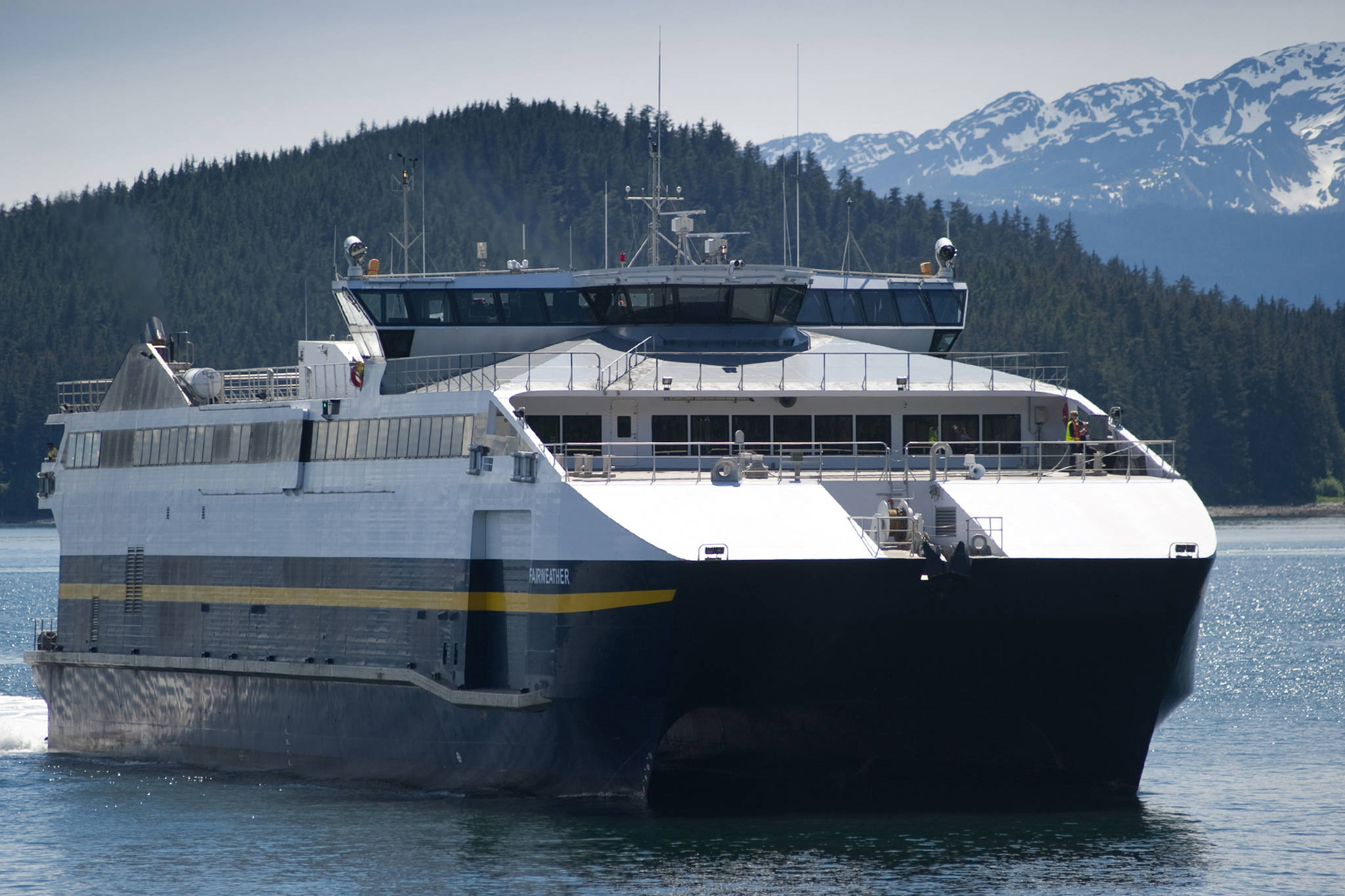Even though it’s only 14 years old, the fast ferry Fairweather is being tied up to the dock for the season and its future is uncertain, the general manager of the Alaska Marine Highway System said Monday.
Capt. John Falvey, the general manager of the AMHS, said the Fairweather is on the same schedule it was on last year. It finished its seasonal run in Southeast this past weekend, he said, and headed to Prince William Sound this week. In mid-November, he said, the Fairweather is heading to Ketchikan where it will be laid up until at least the beginning of May.
Prior to that point, a decision needs to be made about the ferry’s future, Falvey said. The main parties involved in the process, he said, are himself, new AMHS Executive Director Shirley Marquardt, the Department of Transportation Commissioner Marc Luiken and the Governor’s Office.
“The decision point’s gonna come when May 1 comes along,” Falvey said. “Our budgets are what they are.”
In recent years, the AMHS has been in dire financial straits. If it hadn’t been for an emergency bill passed by the Alaska Legislature in March, the ferry system would have shut down in mid-April.
Two Alaska-class ferries are set to join the fleet, including the Tazlina, which is scheduled to begin service this coming May. The second new ferry, the Hubbard, is expected to be completed in 2019 as well. Falvey said the Hubbard is “coming along nicely,” but he’s uncertain when it will join the fleet. The arrival of these ships, Falvey said, makes it tough for the AMHS to afford to keep all its ferries running.
“As new ships come in, decisions need to be made as to what service gets reduced and what ships get eliminated,” Falvey said.
Falvey said the decision-making process gets going this week at Southeast Conference’s annual summit in Ketchikan. Falvey said Thursday’s discussion about transportation will serve as a launching point.
Sitka residents such as Yéilk’ Vivian Mork (who is also a columnist for Planet Alaska) relied on the Fairweather to easily connect them with other Southeast communities. Mork said she loved being able to get to Juneau in under seven hours, and having a ferry running consistently between the two communities was extremely convenient.
Due to the marine highway’s budget struggles in recent years, ferry schedules have been reduced in Southeast. Having a less reliable ferry fleet, Mork said, has made life tougher for people in the region.
“We are losing way too many of our ferries and they are essential for a decent quality of life in Southeast,” Mork said. “Everything from getting supplies, to children attending events in schools to tourism travel, everything. It’s just the way of life here in Southeast.”
Earlier this summer, Mork said, she was stranded in Wrangell due to a ferry breaking down and had to fly back to Sitka. Alaskans are adaptive people and can deal with things like this, she said, but she wants to see the state come up with a plan for the ferry system to serve Southeast better.
The fast ferries were designed in the 1980s as alternatives to road construction or conventional ferries in protected waters. The ferries weren’t built until the early 2000s, and the Fairweather entered service in 2004. Its sister ship, the Chenega, hit the water in 2005.
The Chenega was laid up in 2016 in Puget Sound, as AMHS representatives said it was simply too difficult to afford to keep the Chenega running.
The fast ferries cut travel time, but come at a higher per-hour operating cost than regular ferries. The Fairweather carries 250 passengers. Falvey said the Tazlina carries 50 more passengers and will provide service to Juneau, Haines and Skagway.
The Alaska-class ferries were originally conceived in the early 2000s as one large ferry, but quickly changed to be two ferries by Gov. Sean Parnell. The plan, according to reports at the time, was to have the two ferries run between Haines, Skagway and a terminal at the end of a road north of Juneau.
That road was never built and will not be built in the foreseeable future, but the Alaska-class ferries are still joining the fleet. With them coming online, Falvey said, there isn’t enough room for all the ferries to keep running on the same schedules as they have been.
“Something needs to be reduced or eliminated,” Falvey said, “and we’re in that decision-making process.”
• Contact reporter Alex McCarthy at 523-2271 or amccarthy@juneauempire.com. Follow him on Twitter at @akmccarthy.

